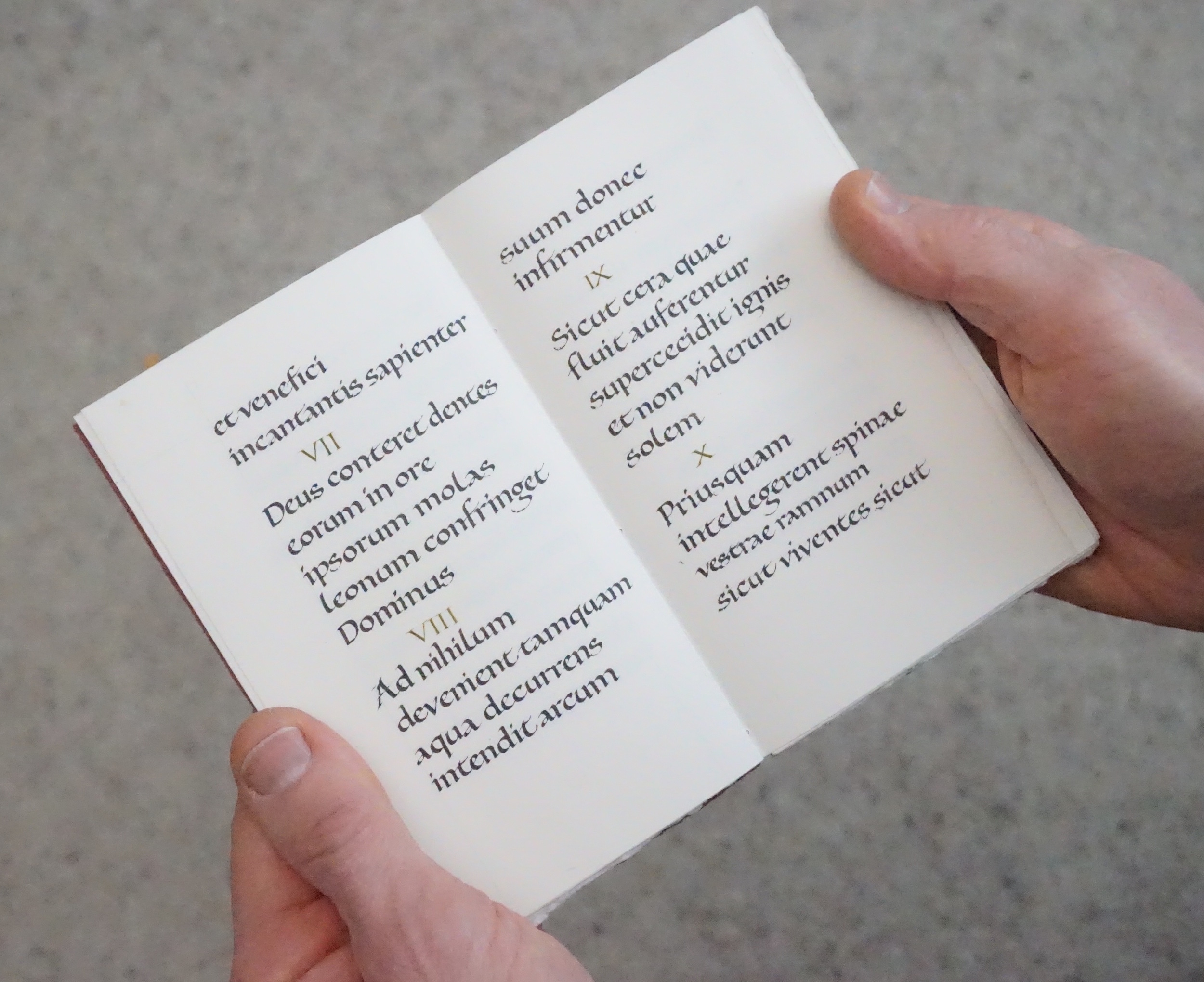Here are pictures of a small but complex piece of work that I've made for an exhibition organised by and to be held at the Bodleian Library from December: Redesigning the Medieval Book. It promises to be an imaginative and exciting exhibition with work by a variety of book artists, binders, printers, calligraphers, painters.
My little triptych has been shortlisted which I'm delighted about. At the moment the selection group at the Bodleian is deciding which shortlisted works to accept for the exhibition as only a limited number can be displayed.
Zig-zag triptych
It is made of wooden boards hinged together with vellum strips so that it can stand in several different ways. Each board is 167mm high and 80mm wide.
Interchangeable vellum text pages slipped behind the vellum strips.
I've made several groups of pages that can be put onto the triptych and there are many different possible combinations of text, symbols and shapes.
The texts I've used are some I've worked with many times over the years and incidentally fit together as a theme, appropriate for the exhibition brief.
As a form, it is useable as a personal meditative and devotional aid. And recently, I visited the wonderful newly displayed treasure of St Cuthbert at Durham Cathedral Treasury having not seen for many years the artefacts found in his coffin. There I saw again the little portable altar that may have belonged to St Cuthbert - and had completely forgotten it was there. It was lovely to see it again in the light of having just made one myself.














